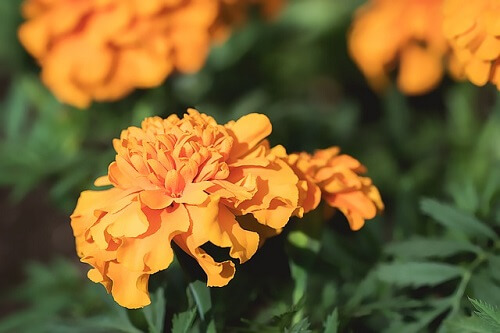Displaying numerous shades of golden yellow, pink and white prolifically through their life cycles, marigolds are one of the most popular choices for summer, because they can keep gardens and planting areas looking beautiful and cheerful all season long. But, just like any other kind of floral blooms, the blossoms will eventually begin to fade away. When that happens, you might be asking yourself if you should be deadheading your marigolds, and if so, the question of how and when to deadhead marigolds is probably going through your mind. Since deadheading marigolds is something that is indeed beneficial to your garden to encourage new blooms, you can read on about the best way to deadhead marigolds to prolong blooming.
What Exactly is Deadheading?
Deadheading is the process of taking away a plant’s flowers that have lost their luster or have begun to wither. This is thought to help bring on new floral blooms in their place, but since in the wild flowers get rid of their dead blooms on their own, some people are reluctant. Ultimately, it comes down to personal preference with a lot of flowers, but it is an important thing for modified annuals like marigolds to undergo.
Deadheading marigolds is a must to keep them producing numerous blooms all summer long, as otherwise, they will not flower as much as they should. In fact by doing so, they will produce new flowers over and over instead of having to expend energy on producing seeds, which diminishes flower formation. It doesn’t take any tools or real training to be able to deadhead these flowers, actually, making it something that is so simple you can do it with your hands, although pruners are still a good way to snip them off. It’s important that you snip not only the deadheads but also the flower pods that have begun to pop up behind those flowers as well.
The best time to do this is to simply watch and see when the marigolds begin to lose their luster, and when that happens, simply begin to take off the blooms. They can be perfect one day and faded the next, so always keep an eye on them to see when the best time to accomplish this task will be.
If you’re unsure how to deadhead marigolds, just follow these simple steps:
- Check the plants frequently for flowers that have begun to fade. You will notice that the tips have begun to curl on the petals or that there are green colors in the middle of the flowers. The green center stands as the beginnings of a new seed pod, and if they are forming seeds, they won’t bloom for long.
- Look down the flower stem to the first bunch of leaves, and then cut the stalk using your hand pruners or even just by snapping off the stalk. Don’t damage the leaves, as this area is where the new flowers will grow from.
- Any stems that have become too long or weak will also need to go. Simply pinch them back and remove them.
With these tips for deadheading marigolds, you’ll be able to keep the beautiful flowers populating your garden all season long. So get out there and start surveying your marigolds now and get started deadheading them where it is needed for a continuous colorful display.









The marigolds in the greenhouse have all bloomed. They are beautiful but not up for sale for another month. Can we snip the young beautiful flowers now without causing harm to the plant?